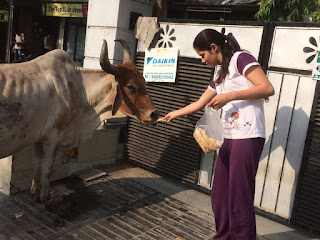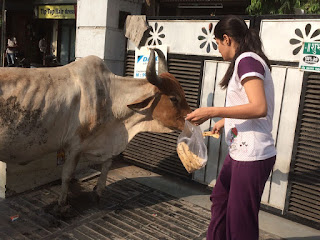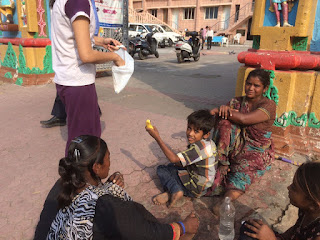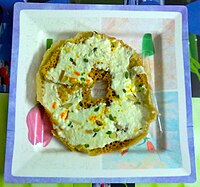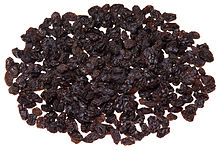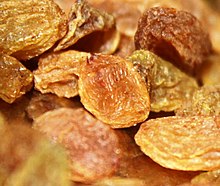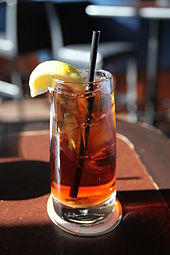Rasgulla
There are rasgullas made of jaggery which are available in Bengal, as well as Orissa during festives. Rasgulla has become a very popular dessert in India. It has also served as the precursor to many other sweets like the rasmalai, raskadam, chamcham, pantua, malai chop and the kheersagar.


ALOO PARATHA
Known as one of the best and popular breakfasts of India,‘Parathas’ (Stuffed Bread) are a healthy, delicious and filling food. Anyone would agree that the best way to start a morning with a good appetite would be to indulge yourself into some steaming hot butter-dripping ‘parathas’.
Origin of Parathas
Parathas originated in Peshawar and then spread all over the former northern parts of India. It began as a wholesome meal often eaten at breakfast. The paratha is stuffed unleavened bread with various fillings that could be added according to your choice.
Traditionally Parathas and lassi go hand in hand and are inherent to Punjabi cuisine. The history of lassi like the paratha is unknown however it is known to have originated in Pakistan. Lassi is made from dahi, which is either made from the milk of the cow, buffalo or goat. Sometimes various flavours are added to it. Lassi can also be plain with the necessary addition of sugar.
TAWA ICE-CREAM
Veggie burger 🍔
MOMOS
Have you ever wondered about the journey of momo? Come to think of it, the momo has probably travelled the farthest of all foods. That, it is now quite at home on the streets of Delhi, as it is comfortable at posh five-star eateries, only confirms how thesestuffed dumplings (either with meat of one’s choice or assorted greens includingpaneer) have evolved over the years. And how India, which is not even its place of origin, has adopted it like its very own is also an interesting twist.
Today, there are food entrepreneurs whoprepare momos in bulk and supply them to vendors and kiosks whose only job is to steam and sell them piping hot with hot sauce to hungry customers who never seem to get enough of them. There was a time, not too long ago, when people associated momos with food from theNortheast. Far from it, it’s not really a part of their traditional cuisine. For instance, in Manipur's capital Imphal, restaurants may now be awaking up to the popularity of this food and including them in their menu with passion, but they can never get it right simply because it is not a traditional dishlike fish and rice is, as in the case in Tripura or other states in the region, with of course a few exceptions.
KHEER
Kheer. A sweet confection based on rice. When prepared as a ritual pucca' food, the rice is first lightly fried in ghee before boiling with sugared milk till the milk thickens. A kheer of jowar is mentioned in the fourteenth century padmavat of Gugarat, and other cereal products (vermicelli, cev, pheni) may be used as well. A thinner product is payasam, and both are popular desserts, routinely as well as on festive occasions. The Hindi word kheer derives from the Sanskrit ksheer for milk and kshirika for any dish prepared with milk."
FAST FOOD FACTS IN BRIEF
In 2010, researchers at the Yale Rudd Center for Food Policy & Obesity issued Fast Food FACTS. The report examined the nutritional quality of fast food menus, fast food advertising on TV and the internet, and marketing practices inside restaurants. Researchers found that the industry spent $4.2 billion on advertising to encourage frequent visits by young people to fast food restaurants, targeting children as young as two years old.
Three years after our first report - using the same methods as the original Fast Food FACTS - this report quantifies changes in the nutritional quality of fast food and how it is marketed to children and teens. These analyses focus on 18 fast food restaurants.
NUTRITION
Despite the addition of some healthy kids' meal options, less than 1% of all kids' meal combinations - 33 out of 5,427 possible meals -- met recommended nutrition standards.
Most restaurants offered at least one healthy side option and three-quarters increased healthy beverage options and McDonald's changed Happy Meal sides to automatically include half-portions of french fries and apples.The number of possible kids' meal combinations increased 54%, but there was no change in the number of combinations that qualified as healthy meals for elementary school-age children.Only 3% of kids' meal combinations met the food industry's own revised CFBAI nutrition standards or the National Restaurant Association's Kids LiveWell standards.
Although the number of regular menu items offered increased dramatically, the proportion of healthy menu items remained the same.
Menu items offered by McDonald's, Subway, Burger King, and Taco Bell increased 35%.Less than one-quarter of restaurants' regular menu items qualified as nutritious options for teens.Restaurants continued to offer large or extra-large soft drinks (350-850 calories) and large french fries (470-610 calories).
MARKETING TO CHILDREN AND TEENS
In 2012, fast food restaurants spent $4.6 billion in total on all advertising, an 8% increase over 2009. For context, the biggest advertiser, McDonald's, spent 2.7 times as much to advertise its products as all fruit, vegetable, bottled water, and milk advertisers combined.
Older children's total exposure to fast food TV and internet advertising declined.
TV advertising viewed by children ages 6 to 11 declined by 10% to 3.2 ads per day.Popular child-targeted websites from McDonald's, Burger King, and Dairy Queen were discontinued.
Most fast food restaurants stepped up advertising to children, and preschoolers' exposure to TV advertising did not change.
In 2012, preschoolers saw 1,023 fast food ads -- 2.8 per day.Three-fifths of fast food restaurants increased TV advertising to older children.McDonald's display ads for Happy Meals increased 63% to 31 million ads monthly. Three-quarters appeared on kids' websites, such as Nick.com, Roblox.com, and CartoonNetwork.com.
There were some positive trends in fast food marketing to teens but restaurants continued to target them with TV and internet marketing for primarily unhealthy products.
TV ads viewed by teens did not change, but average calories per ad viewed declined by 16%.Teens were more likely to see more TV ads for Taco Bell, Sonic, and Starbucks compared with adults.Display ads on youth websites declined by more than half, from 470 million monthly ad views per month in 2009 to 210 million in 2012. However, KFC, Subway, and Starbucks more than doubled display advertising on youth websites.
Fast food marketing via mobile devices and social media popular with teens has grown exponentially.
Six billion fast food ads appeared on Facebook - 19% of all fast food display advertising - including more than half of Dunkin' Donuts' and Wendy's ads.Smartphone apps offer interactive features such as order functions and special offers.
Fast food restaurants continued to target black and Hispanic youth, who face higher risk for obesity and related diseases.
Fast food advertising spending on Spanish-language TV increased 8%. KFC and Burger King increased their spending by 35% to 41% while reducing English-language advertising.Black and Hispanic youth were more likely than other youth to visit one-third or more of all fast food websites
RECOMMENDATIONS
Over the last three years, there have been some improvements to the nutritional quality of fast food, and to companies' marketing practices. However, the pace of improvement is slow and unlikely to reduce young people's overconsumption of high-calorie, nutritionally poor fast food.
Fast food restaurants should do more to improve the nutritional quality of kids' meals and regular menu items
Apply industry standards for healthy kids' meals to the majority of kids' meal combinations available for purchase - not a mere 3%.Automatically provide healthy sides and beverages as the default kids' meals.Increase the proportion of lower-calorie, healthier items on their menus and make them available at a reasonable price.
Fast food restaurants should stop marketing directly to children and teens to encourage consumption of unhealthy fast food.
Limit advertising on children's TV networks and third-party kids' websites to healthy kids' meals only.Stop unfair marketing targeted to children, including ads that focus on promotions, not food, mobile advergame apps, and online ads that link to advergame sites.Ensure that preschoolers are not exposed to fast food advertising, especially advertising on Spanish-language TV.Stop targeting older children as young as age 12 with marketing for unhealthy fast food that can damage their health.Establish age limits on fast food marketing to youth via social media and mobile devices that take unfair advantage of their susceptibility to peer influence and impulsive actions.
Ghewar
EGG
Heart healthy...
Eggs are rich in several nutrients that promote heart health such as betaine and choline. During pregnancy and breast feeding, an adequate supply of choline is particularly important, since choline is essential for normal brain development. If you are eating eggs during pregnancy however, ensure you cook until the whites and yolks are solid. In traditional Chinese medicine, eggs are recommended to strengthen the blood and increase energy by enhancing digestive and kidney function.
Eggs also contain more Vitamin D than they did 10 years ago, which helps to protect bones, presenting osteoporosis and rickets. And they are filling too. Eggs for breakfast could help with weight loss as the high protein content makes us feel fuller for longer. Eggs should be included as part of a varied and balanced diet.
KACHORI
Kachori History
Kachori (pronounced [kətʃɔːɽiː]) is a spicy snack popular in India, Pakistan and other parts of South Asia. It is also common in places with South Asian diaspora, such as Trinidad and Tobago, Guyana, and Suriname. Alternative names for the snack include Kachauri, Kachodi and Katchuri.
Kachoris have been popular in old Delhi, even before samosas gained popularity after the partition. Banarasidas, the author of biographical Ardhakathanaka, has mentioned buying Kachoris in Agra in 1613. For seven months, he bought a ser of Kachoris daily, and owed twenty rupees.
Kachori is supposed to have originated inUttar Pradesh or Rajasthan. In these states it is usually a round flattened ball made of fine flour filled with a stuffing of baked mixture of yellow moong dal or Urad Dal (crushed and washed horse beans), besan (crushed and washed gram flour), black pepper, red chili powder, salt and other spices.
Additionally in Rajasthani cuisine, the Pyaaj Kachori (onion kachori) is very famous. Another popular form of Kachori inJodhpur is the Mawa Kachori invented by Late Rawat mal ji Deora. It is a sweet dish dipped in sugar syrup.
In Gujarat, it is usually a round ball made offlour and dough filled with a stuffing of yellow moong dal, black pepper, red chili powder, and ginger paste.
In Delhi it is often served as chaat. Delhi also has another kind of kachori, called ‘Khasta kachori’ or ‘Raj Kachori’.
Potato chips 🍟
- Americans today consume more potato chips than any other people in the world.
- As a world food, potatoes are second in human consumption only to rice. And as thin, salted, crisp chips, they are America's favorite snack food.
- The potato chip did not leave the United States as a food item until 1921 when they were introduced in England. Since the words chips was already in use for what we in this country callfrench fries, the word crisps was used.
- The potato used for making chips is not the same brand of potato you get at the super market. Special varieties are grown specifically for chips. They are called “chipping” potatoes and have to be specially ordered.








